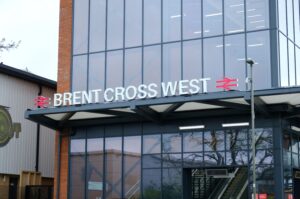Mark Gauguier, James Bromley, and Amy Penrose all work at Farrer & Co. They understand how industry experts can address issues surround planning and tax systems – two major factors affecting placemaking in the UK.
As we lurch inexorably towards the General Election (and London Mayoral election), issues surrounding planning and tax reform and the need for new homes are set to be key themes of 2024.
Against this backdrop, and using research conducted as part of ADAM Architecture and Farrer & Co’s Placemaking Two Report (2024), we briefly explore some of the current limitations of the planning and tax systems and the case made by the report for a holistic and patient approach to placemaking.
What is happening now and what are the barriers to change?
The problem is put succinctly by Lord Taylor of Goss Moor – ‘Housebuilders manufacture houses not places.’ This is not entirely surprising, however, as the current planning and tax regimes have helped shape a market that is skewed towards short-term development that maximises financial value at the point houses are sold, with little consideration to the long-term value of well-designed communities. The report suggests that various elements play key roles in thwarting the delivery of development driven by placemaking and stewardship.
Land allocation process: starting at the very beginning, the current planning system is built on representations from landowners and developers which can result in a piecemeal approach to bringing development forward. This is not aided by the abstract nature of local plans, which can discourage community engagement.
Rigid master planning: organic, flexible development is challenged by masterplans that are fixed years, and sometimes decades, before construction. This is particularly important when it comes to addressing the requirements of the community and harnessing advancements in technology: for example, opportunities for onsite energy production or making provision for electric vehicles.
Best value?: landowners who need to demonstrate ‘best value’ to their trustees and beneficiaries can be forced to sell their assets before building commences and upfront infrastructure or survey costs are due, instead of staying involved long-term. This may scratch an immediate itch, and may sometimes be commercially unavoidable, but the well advised landowner will understand that best value can take many forms.
Quick returns: the current market best suits larger (invariably national) housebuilders whose model is to build houses quickly and move on to the next site with little consideration as to how the development will age. Upfront acquisition and infrastructure costs can force the need for quick returns on investments. Quick returns often come at the expense of whole-place design, with focus instead on delivering more or larger (ie more profitable) houses in preference to green space or bungalows.
Complex tax rules: the tax system poses significant challenges for landowners. Without careful consideration, landowners who choose a patient approach may unintentionally incur upfront, unfunded tax charges. Additionally, their ongoing participation in certain schemes could lead to higher tax liabilities in the long term. Charities, in particular, may struggle to support initiatives aligned with their charitable goals and community enhancement due to the tax implications.
Prohibits landowner collaboration: the current tax framework makes it extremely difficult for diverse groups of landowners to unite in a single, long-lasting venture in the way necessary to successfully deliver high-quality legacy projects. Patient schemes, which typically have placemaking at their core, are often characterised by the close involvement of landowners already invested in their local communities, seeking to generate a positive legacy as well as financial returns. Landowners, such as charities, local individuals, trusts and private companies, are more likely to seek this patient approach to development. In making landowner collaboration relatively punitive, however, the current tax landscape tends to work against these schemes.
An opportunity for change?
Since Covid-19, people have led increasingly localised lives due to the expectation of many to work at least a portion of the week from home. As a result, we now demand that our neighbourhoods are walkable, supportive of local businesses and incorporate green space.
Schemes highlighted in the Placemaking One Report (2020), such as Nansledan in Cornwall and Derwenthorpe in Yorkshire, demonstrate what is possible when development is focused on building communities, not just houses. The Placemaking Two Report (2024) builds on these findings and explores potential changes, including to the planning and tax regimes, to allow greater opportunities for more holistic approaches to development.
Local Development Orders (LDOs): LDOs delivered by partnerships between local authorities and developers could be utilised to ease the way for uncontentious development that would promote economic, environmental and social gains. LDOs are effective mechanisms to de-risk long-term developments for investors and developers because the risk of not achieving permission is much lower. At the same time, the development’s ‘vision’ is relatively insulated from political changes and promotes a more planned reality. In contrast to the current piecemeal approach which can easily lack bigger picture thinking, LDOs can focus on delivering a comprehensive plan for infrastructure and community amenity to achieve the right development in the right place.
Public-private joint ventures (JV Partnerships): subject to complying with public procurement rules, JV Partnerships could assist in re-shaping traditional land acquisition models with the aim of altering potentially prohibitive cash flow positions. The effect of this would render the market more accessible to a wider range of developers. Practically, JV Partnerships could explore local authorities offering land to developers for a share of the development profits, in return for delivering key policy aspirations, such as schools or infrastructure initiatives.
A fresh approach to taxation: implementing a new tax framework that enables stakeholders to collaborate in a unified entity, without the burden of extra tax expenses, would facilitate larger scale community developments. Tailoring tax rules to ease the financial burden of long-term local stewardship of communal assets, particularly for charities, would further mitigate the existing tax risks associated with longer-term community engagement.
Design control: it is evident that community engagement should extend beyond the construction phase to protect, manage and regulate development. Thoughtfully designed and well-monitored legal frameworks for design control and estate management play a crucial role in sustaining the success of longstanding initiatives and endorsing the fundamental principles of landowner stewardship.
Supporting local businesses: local authorities may wish to consider offering sustainable or de-risked rental structures to businesses that take up premises early in developments. Diverse mixes of local independent businesses have been shown to result in long-term community benefits – including house price growth, local job creation and creating a distinctive sense of place.
So often, developments are designed as sleepy mono-use commuter towns to be returned to after a day’s work in the city, not as desirable places in their own right. As the report highlights, if we are serious about creating sustainable and vibrant places, we need to focus on promoting a more patient approach to placemaking – and on developing the tools required to achieve that.
Images: Tye Doring and Etienne Girardet
More features:
















Leave a Reply